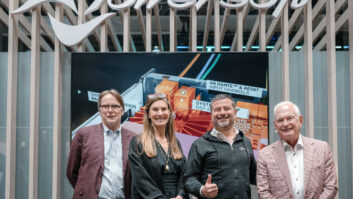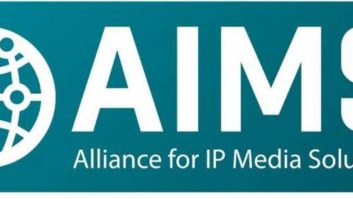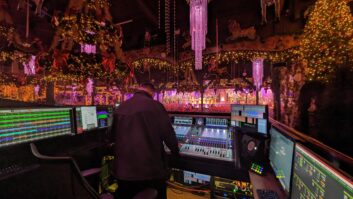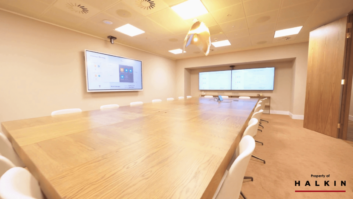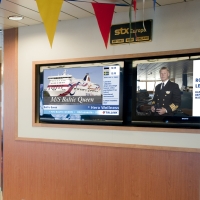
When Tallink – one of the largest passenger and cargo shipping companies in the Baltic Sea region, operating on seven shipping routes with twelve ships under the brands of Tallink and Silja Line – wanted to harmonise digital signage across its fleet, the company turned to ONELAN.
Tallink wanted to make their ships’ digital signage systems consistent and centrally manageable, with central organised media creation and delivery. Seven ships in Tallink’s fleet already have digital signage systems installed, and because some of the systems were from different providers, content had to be created in three or four different formats and with different resolutions. Furthermore, as the digital signage was standalone for each ship, all media had to be provided to individual ships on USB sticks every time changes and updates were required. ONELAN says that its digital signage solution has resolved this.
M/S Baltic Queen is Tallink’s newest ship and has the most advanced ONELAN digital signage system, including eight ONELAN Net-Top-Boxes (NTBs) in the onboard shop for showing point of sale advertising on 37” screens; eight ONELAN NTBs in cafés and restaurants for menu displays on 22” screens; and two ONELAN NTBs with 42” screens at the information desk for officers and crew, and to provide latest cruise and entertainment information.
The ONELAN digital signage system was installed and is managed by SiseTV, and the digital signage on all Tallink Ferries’ ships is managed centrally from land via a single ONELAN NTB publisher media player. Local information is added and updated on the ships, while more sophisticated content and system management is undertaken by SiseTV.
A key issue encountered with the digital signage was networking with ships when they are at sea. The satellite connections needed have quite narrow bandwidths and are very expensive. This problem was solved by programming the NTBs in such a way that large files are only acquired and downloaded when ships are in harbour: in this way, regular wireless connections can be used.


